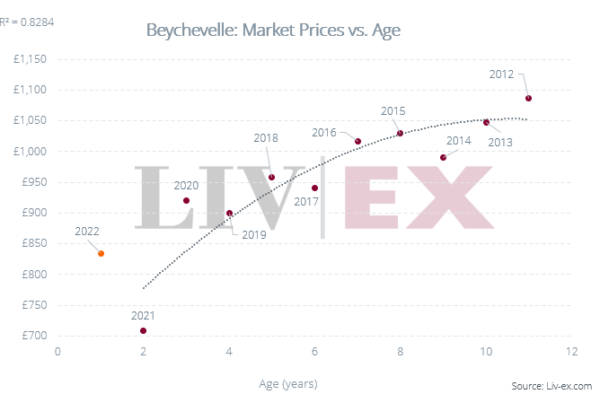
Location: Puligny-Montrachet, Côte de Beaune, Burgundy
Owner: Brice de la Morandiere
Founder: Joseph Leflaive
The Liv-ex Classification 2019: 1st, 2nd
2019 Power 100: 41
Vineyard area: 22 ha
Colour: White
Grape varieties planted: Chardonnay
Wines: Grand Cru – Montrachet, Chevalier-Montrachet, Bâtard-Montrachet, Bienvenues-Bâtard-Montrachet; Premier Cru – Puligny-Montrachet Les Pucelles, Folatières, Les Combettes, Le Clavoillon, Meursault sous le Dos d’Âne; Village – Puligny-Montrachet; Bourgogne blanc
Brief history
Domaine Leflaive is the most prominent name in Puligny-Montrachet, and arguably the most famous white Burgundy producer.
The earliest roots of the domain go back to 1717 but its foundation has mostly been associated with Joseph (1870-1953), an engineer who participated in the creation of the first French submarine. Following his marriage to Camille Biétrix du Villars from the Dauphiné, his career took a different course and Joseph started to look after the family vines in Puligny-Montrachet. In 1920, he replanted and enhanced the vineyard that had suffered from the phylloxera crisis, with the help of his estate manager François Virot. Together, they chose rootstocks that were better adapted to each parcel of land, and the Leflaive family gradually started to sell their wine under their own label and to a private clientele.
Joseph was succeeded by two of his sons, Vincent and Joseph-Régis, who ran the property together; however, it was under the stewardship of Vincent’s daughter Anne-Claude (1990-2015) – a biodynamic viticulture pioneer – that the domaine became a leader in Burgundy’s biodynamic movement. The whole property was converted biodynamic in 1997.
Today, Anne-Claude’s nephew and Joseph’s great grandson, Brice de la Morandiere, is at the helm, making him a 4th generation leader. In recent years, the estate has expanded with nearly 3 hectares replanted in Puligny, 7 hectares acquired in the Mâconnais and with the creation of a new vineyard planned for 2020 in the Hautes Côtes de Beaune.
Market Performance
In the secondary market, wines from Leflaive have taken a significant share of white Burgundy trade. In 2009, Leflaive accounted for over half of the white Burgundy trade, which stood at a miniature 1.2%. So far this year, white Burgundy’s share has grown to 4.3% of the total trade by value; of that, almost a third has been Leflaive.
The most active wines from the domain this year have been Chevalier Montrachet (38%), Batard Montrachet (19%) and Puligny Montrachet Clavoillon (12%). On a vintage level, 2017 has proven the most popular (65%). Over the long term, however, the 2015 and 2014 vintages have led trade.

When it comes to price performance, the Leflaive index has outperformed the white Burgundy index both in the short and medium term, as the charts below show. Over the past four years, it has risen 53.4% compared to 25% for White Burgundy. However, it has fallen behind the Burgundy 150 (up 71.6%), which had a stellar period 2016-2018, in part helped by price rises for red Burgundy power brands, Armand Rousseau and DRC.

But tables have turned in the past year, with Leflaive (6.5%) outperforming the Burgundy 150 (-7.2%) too. The Burgundy 150 has been the worst performing Liv-ex 1000 sub-index; we examined its decline in our latest extended report on the region, Burgundy: after the peak.

Finally, the chart below compares the Market Prices of the last ten vintages of Leflaive’s Chevalier Montrachet – the most actively traded wine from the domain. Its latest vintage, 2018, was released in the UK last December, with its Market Price rising 19% since.

With a range varying from Grand and Premier Cru to Village and Bourgogne Blanc, Leflaive has enticed buyers for the past 300 years. The investment potential of its top wines, critical acclaim and heritage are only some of the prerequisites for its success in the centuries to come.





